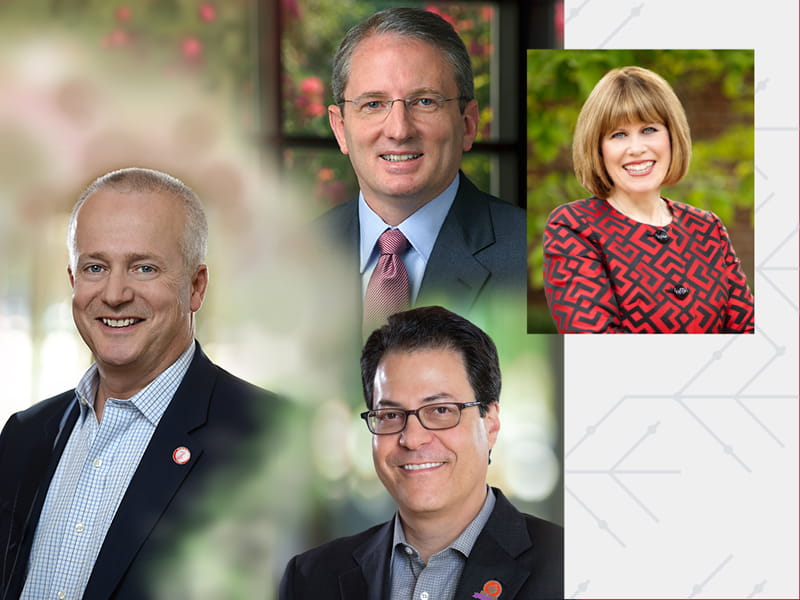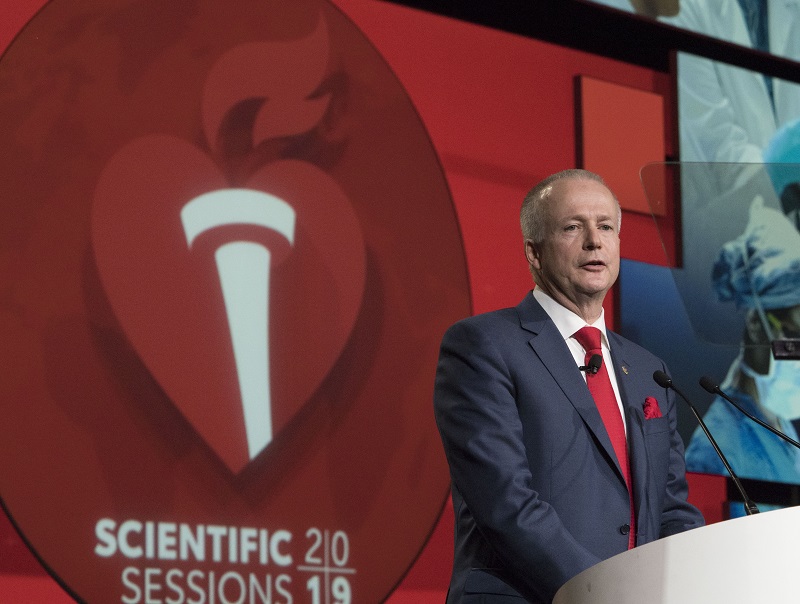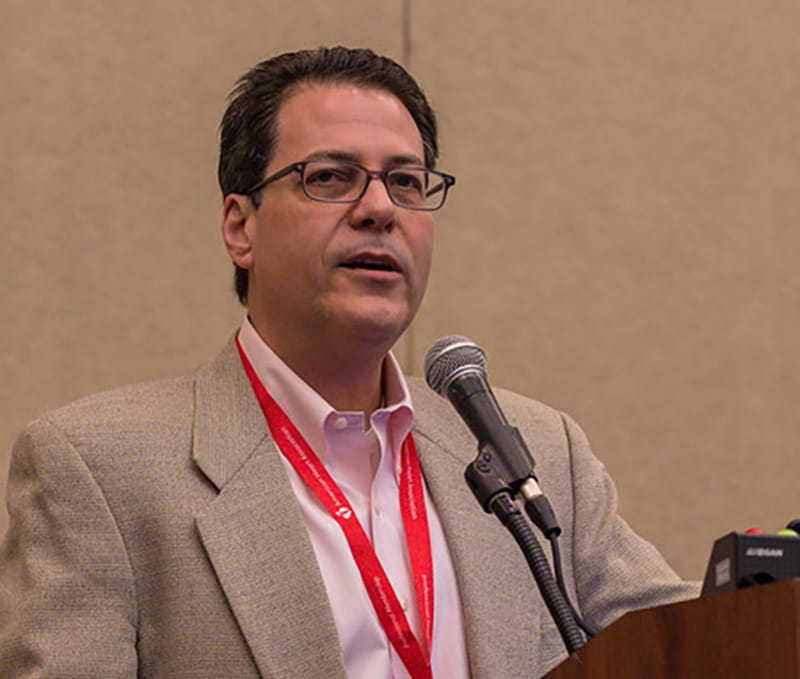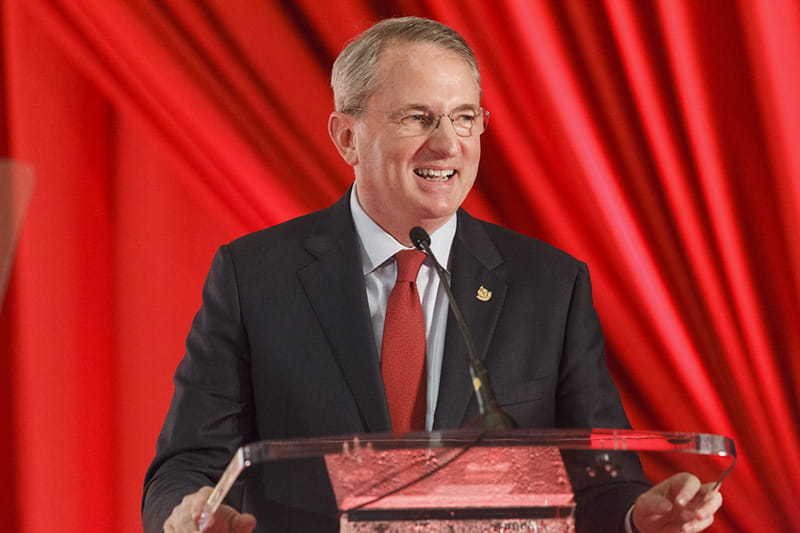Compassion amid crisis: Present, future, past AHA presidents awed by COVID-19 response
By Nancy Brown, American Heart Association CEO

Dr. Mitch Elkind couldn't sleep. His mind was in overdrive, still cycling through reports he'd read about the spread of coronavirus in China and projecting what it might mean in the United States.
This was two weeks ago, long before coronavirus ruined the sleep cycles of many Americans.
To process his thoughts, Elkind went to his computer and started typing. His words turned into a rough draft of an article published Tuesday in the leading scientific journal "Circulation."
Elkind is more than an observer. He has a prominent voice in public health both as a professor at Columbia University and a neurologist at New York-Presbyterian Hospital, and as the incoming president of my organization, the American Heart Association. He shares the byline on that "Circulation" article with current AHA president Dr. Robert Harrington and with immediate past president Dr. Ivor Benjamin.
Before the article was published, coronavirus hit way too close to home for Elkind: His parents live in New Rochelle, New York, the suburb that includes the nation's first "containment area" to slow the rampant spread of COVID-19. (His parents are OK.)
Personally and professionally, coronavirus has upended all our lives. What follows are snapshots of how the demands of caring for others – while still caring for their loved ones, and for themselves – is being juggled by Elkind, Harrington and another former AHA president, Dr. John Warner.
Elkind is a clinical neurologist and a researcher in New York, Harrington a university department of medicine chair in the Bay Area and Warner a hospital system executive in Dallas. Each physician brings unique experiences and perspective.
Yet in separate conversations, all emphasized two points:
- These difficult times are stress-testing our nation in ways that go beyond health care.
- And, what gives them the most hope we'll pass this test is the way people are responding.
"It's the best of humankind," Harrington said.

As chairman of the department of medicine at Stanford University, Harrington's responsibilities range from students and teachers to researchers and clinical trials to a hospital system. And he's in an area where six counties are facing orders from local government to "shelter in place."
"There's no playbook for this," he said.
To understand the scope of his challenges, consider a single one: What to do about ongoing clinical trials that include patients receiving experimental therapies.
"How do we make sure that they get the care and the tracking they need?" he said.
Last week, Harrington moderated what was essentially a one-hour class on COVID-19 led by experts for others in the medical and science world. It's called "Grand Rounds," and it's always streamed live.
Instead of the usual audience of about 200, this episode maxed out capacity on Zoom. Once posted on YouTube, it got 8,000 hits in the first day. His team worked with Zoom to expand their capacity to 3,000 in time for a second installment Wednesday.
"We see our role in this as, `What's the science? What do we know today? What should we be talking about? How do we share that with our colleagues in the public? And how do we answer questions?" Harrington said.
While Harrington seeks to help others, others are eager to help him. He emphasized that it goes beyond his health care teammates. Local companies and philanthropists want to be part of the solution, too.
"Almost every conversation I have with somebody, they look me in the eye and say, `Bob, what can I do to help?'" he said. "Just (Monday), one of our faculty members in another department drove up to local pharmaceutical companies and picked up laboratory testing reagents so that our laboratory can keep running tests for COVID-19. She picked up 7,000 kits that were given to us."
Harrington also shared part of an email he received from Dr. Sang-ick Chang, Stanford's chief of primary care and population health.
Chang asked his staff about taking on extra duties. Pretty much everyone agreed, with most adding comments. One of those read: "I would also check a box that asked if I would be able and willing to do more than this if I need if need be. … If this gets a lot worse and there is greater need, then my family would figure out a way that I could do more."
Harrington's family is helping keep him grounded, too.
They're all passionate sports fans, especially about Boston teams. So when Tom Brady said Tuesday he was leaving the Patriots, a family group text kept Harrington's phone buzzing. Pondering something besides coronavirus for a few minutes was a pleasant distraction (even if it wasn't what Pats fans wanted to hear).
The bigger issue for Harrington's family is that his wife has been in North Carolina for several weeks. (She was caring for her sister, who was dying of cancer and passed away earlier this week.) Once coronavirus moved into the Bay Area, two of their four daughters moved in with him. One is a Stanford graduate student who's not allowed in her dorm, the other works in San Francisco and is required to work remotely these days.
"So, I'm trying to take care of my two millennial daughters while they're trying to take care of me," he said, laughing.
"At the end of these long, long days, the three of us are cooking together. A new rule they instituted a couple of days ago is that we shut off the TV and we sit and talk about things. That's how I'm maintaining my mental discipline. Those two young women are really giving me relief in this tough time."

The uncertainty we all feel during coronavirus is sometimes compared to the uncertainty following the Sept. 11 terrorist attacks. It's especially acute for those who were closest to it, such as Elkind.
He oversaw the neurology residency training program at New York-Presbyterian Hospital/Columbia campus when the planes hit the World Trade Center. The hospital hurried to clear out as many patients as possible for "what we expected to be a massive onslaught of trauma victims."
"Then we sat and waited," he said. "Because, of course, nearly everybody had died immediately."
This time, the beds are filling fast. He's ready to do whatever he's asked, including working outside his specialty if necessary. (In Italy, he noted, dermatologists and rheumatologists were pressed into duty for respiratory patients.)
Meanwhile, he's also trying to sustain a clinical trial he oversees that involves patients treated at 140 sites across the country. His three partners running the project include another doctor at nearby Cornell and two at the University of Washington – in other words, all in coronavirus hot spots.
The night Elkind had trouble sleeping, New York had about 11 cases. The next day, 22.
Fearing a tide that would wash across the country, Elkind – who succeeds Harrington on July 1 – thought about the AHA's role.
He saw it as two-fold: The "old school" way of looking out for heart and stroke patients and the "new school" emphasis on equitably extending healthy life expectancy for Americans from 66 to 68 by 2030 through supporting every aspect of health and well-being.
Coronavirus makes that even more challenging by upending our healthcare and economic systems. Both are intertwined in the AHA's aim of equitably caring for all Americans because statistics show that people with fewer resources lead shorter lives. The AHA has long been devoted to programs, research and advocacy efforts to lift those who need it most.
"I think this pandemic will be a natural experiment," he said. "I think we will see that those states with better resources and better developed health care systems will do better, and in those places where systems are worse, there will be higher mortality rates."
Aside from Columbia and the AHA, Elkind also is monitoring his parents, whose age and location escalate their risks.
"They're staying close to home, going for walks and breathing fresh air," he said. "They're trying to limit their shopping and not interacting with too many people."
If they need someone to shop for them, they could visit InvisibleHandsDeliver.com, a free service for residents of New York City and Jersey City, New Jersey.
The website went up last weekend, started by a college student home for spring break and a recent graduate home from work, both eager to help neighbors too vulnerable to leave home. The site helped so many, so quickly that the founders have been interviewed on Fox News and CNN. One of those founders: Liam Elkind, Mitch's son.
"They expected to have a few friends helping out and within a few days they had 1,500 volunteers," the proud dad said. "That tells us that when the bad stuff seems overwhelming, a tremendous amount of good can still come out of it. It's a message for me to keep my spirits up."

Warner is an interventional cardiologist whose primary duty is overseeing 19,000 employees who care for more than 100,000 hospitalized patients, 600,000 emergency room patients and 3 million outpatient visits at UT Southwestern and its affiliated hospitals.
Now put coronavirus into that mix.
While echoing Harrington's line about lacking a playbook, he does have a recent comparison: In 2014, Ebola made its U.S. arrival in Dallas. The patient carrying it died at a local hospital and infected two caregivers.
"We prepared then for people to come to the ER who might be highly infectious," said Warner, who was AHA president from 2017-18. "But the scale of this is just overwhelming. And it's occurring at the same time as an active flu season, which has many of the same symptoms as the coronavirus. It's hard to decide."
Also hard: Ensuring his staff has masks, gloves and other personal protective equipment (PPE).
"When in doubt, we tell people to use PPE," he said. "Now it's a precious commodity. We're beginning to think about when we need to use it and when we don't because we don't know how much PPE it's ultimately going to take."
Even before Dallas officials recommended gatherings no larger than 10 people, UTSW insisted on gatherings of five or less. As an academic medical institution, that meant requiring researchers to work from home instead of their labs.
"Research and medicine are team sports – we encourage larger teams – and now, all of a sudden, we have to find a way to do it virtually," Warner said. "It's difficult, but we just don't want people on campus for everyone's safety."
Another important step is for each person to monitor their own health. Beyond social distancing, washing hands and other virus prevention, general maintenance is a must as well.
"You've got to build in guardrails – sleep, exercise, pay attention to what you're eating," he said. "I try to take 5-10 minutes an hour, or between meetings, to go for a walk or even phone a friend – some way to relieve the stress. (Monday) night, I took an hour off from email and watched TV. Normally, I would've emailed while watching TV. I needed a breather.
"Now is also a time to appreciate the people around you and your common commitments, whether it's your job, your church or your social scene. We all have reasons to be thankful."
A version of this article appeared on Thrive Global.
Editor's note: Because of the rapidly evolving events surrounding the coronavirus, the facts and advice presented in this story may have changed since publication. Visit Heart.org for the latest coverage, and check with the Centers for Disease Control and Prevention and local health officials for the most recent guidance.
If you have questions or comments about this story, please email [email protected].




